How to Fertilize Palm Trees: Secrets to a Tropical Paradise
- March 25, 2024
- 0 comment
Discover the secrets on How to Fertilize Palm Trees and turn your garden into a tropical paradise. Learn expert tips for lush, vibrant growth. Welcome to your ultimate guide on how to fertilize palm trees, where we unlock the secrets to transforming your garden into a tropical paradise. Palm trees symbolize relaxation and luxury, evoking images of sunny beaches and tranquil vacations. However, achieving that lush, vibrant growth in your own backyard requires a bit more than just planting and hoping for the best.
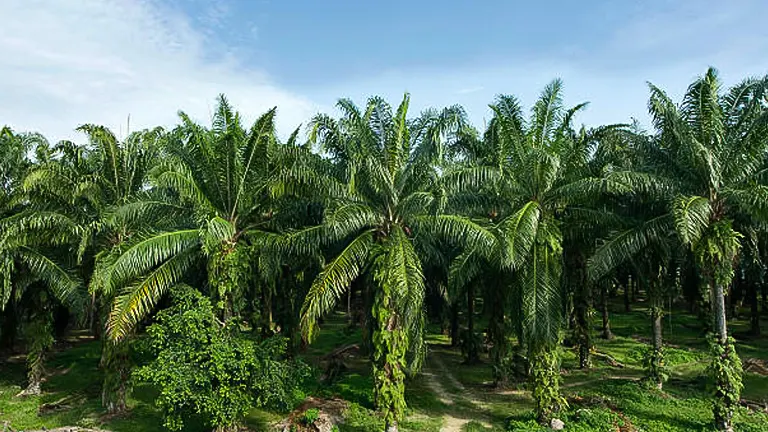
In this article, we’ll dive into expert tips and techniques that ensure your palm trees not only survive but thrive, creating a serene and picturesque landscape you’ll love. From understanding the specific needs of palm trees to selecting the right fertilizer and applying it effectively, we’ve got you covered. Let’s embark on this journey to a greener, more exotic garden together.
Table of Contents
- Understanding Palm Tree Nutrition
- Choosing the Right Fertilizer
- Optimal Planting Strategies for Palm Trees
- Best Practices for Fertilizing Palm Trees
- Step-by-Step Guide on How to Fertilize Palm Trees
- Pruning Techniques for Healthy Palms
- Ongoing Care and Maintenance
- Conclusion
- FAQs
Understanding Palm Tree Nutrition
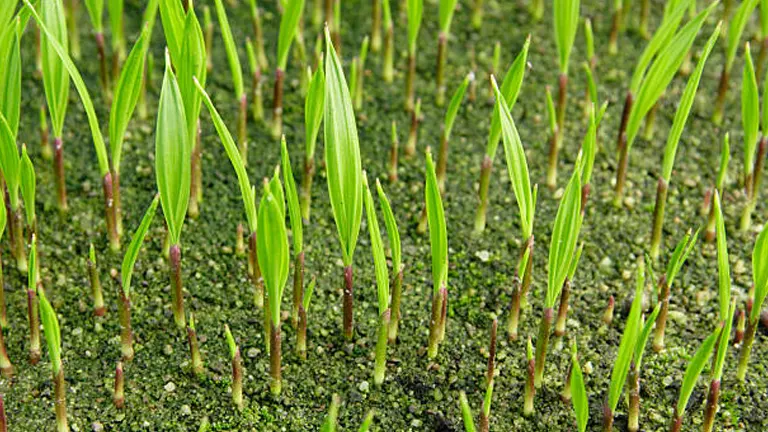
For palm trees to flourish, achieving a comprehensive grasp of their nutritional needs is essential. These tropical beauties thrive on a meticulous balance of macronutrients and micronutrients, each contributing uniquely to the plant’s physiological processes. Let’s delve into the specifics:
- Nitrogen (N): This macronutrient is fundamental for chlorophyll production, the green pigment responsible for photosynthesis. In palms, an adequate nitrogen supply is crucial for fostering vibrant, green foliage. However, excessive nitrogen can lead to rapid growth that sacrifices the plant’s structural integrity and disease resistance.
- Phosphorus (P): Phosphorus plays a pivotal role in energy transfer within the plant, facilitating critical processes such as photosynthesis and nutrient uptake. It is particularly vital for young palms, promoting robust root development and enhancing the plant’s ability to withstand transplant shock.
- Potassium (K): Known as the “quality nutrient,” potassium influences numerous aspects of palm health, including water use efficiency, disease resistance, and the synthesis of proteins and starches. A sufficient potassium level helps palms endure environmental stresses, from drought to cold temperatures.
Micronutrients, though required in smaller quantities, are equally critical:
- Magnesium (Mg): Essential for chlorophyll synthesis, magnesium deficiency is often manifested as chlorosis, a condition where leaves turn yellow while the veins remain green.
- Manganese (Mn): Involved in enzyme systems that protect palms from oxidative stress, manganese deficiency can lead to “frizzle top,” a disorder where new leaves emerge distorted and frizzled.
- Iron (Fe): Crucial for chlorophyll formation, iron deficiency leads to chlorosis, similar to magnesium but often starts at the youngest leaves.
Incorporating these nutrients at the right levels is paramount for palm tree vitality. The table below provides a quick reference to the optimal nutritional levels for maintaining healthy palm trees, catering to the needs of those keen on the scientific aspects of palm care.
Optimal Nutritional Levels for Palm Tree Health and Vigor
| Nutrient | Optimal Level (ppm)* | Role in Palm Health | Deficiency Symptoms |
|---|---|---|---|
| Nitrogen (N) | 150-250 | Supports leaf development and chlorophyll production | Stunted growth, pale green leaves |
| Phosphorus (P) | 30-50 | Aids root growth and energy transfer | Reduced growth, dark green foliage |
| Potassium (K) | 150-300 | Enhances overall health and stress tolerance | Yellowing tips, necrosis |
| Magnesium (Mg) | 50-100 | Essential for chlorophyll synthesis | Chlorosis, with green veins on yellow background |
| Manganese (Mn) | 20-50 | Supports enzyme systems and protects from stress | Frizzle top, distorted new growth |
| Iron (Fe) | 100-200 | Crucial for chlorophyll formation | Chlorosis, starting in young leaves |
*ppm: parts per million
Choosing the Right Fertilizer
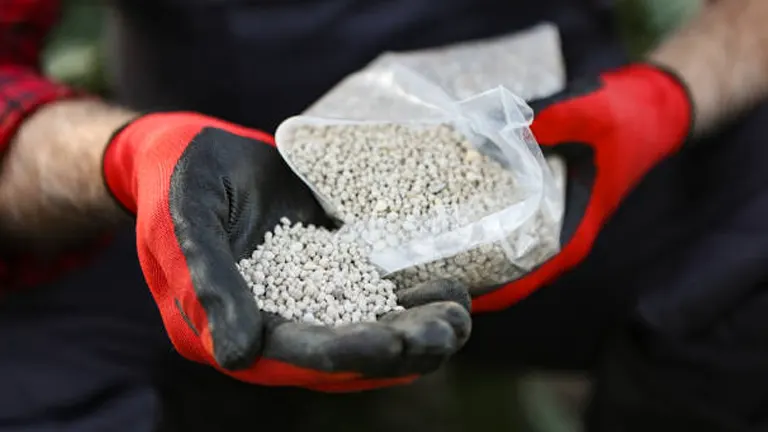
Selecting the most suitable fertilizer is a pivotal decision in the care and maintenance of palm trees, impacting everything from their growth rate to leaf coloration and overall resilience. The choice between organic and synthetic fertilizers is just the beginning; understanding their composition, release rates, and the specific needs of your palm trees can significantly influence their health and vitality.
- Organic Fertilizers: These products are made from natural materials, including plant, animal, and mineral sources. They not only supply essential nutrients to the palm trees but also contribute to the long-term health of the soil by improving its structure, water retention, and microbial activity. Organic fertilizers typically release nutrients slowly, over several months, reducing the risk of nutrient leaching and burn. They are especially beneficial in building up soil fertility to support palms in the long term.
- Synthetic Fertilizers: Designed for efficiency, synthetic fertilizers are chemically formulated to provide a rapid supply of nutrients to plants. They can be tailored to deliver a precise NPK ratio, addressing specific nutritional deficiencies quickly. However, their fast-release nature requires careful application to avoid potential harm to the palm roots and surrounding environment. Overuse can lead to nutrient runoff, contributing to environmental pollution.
- NPK Ratio and Its Importance: The NPK ratio is a measure of the concentration of nitrogen (N), phosphorus (P), and potassium (K) in fertilizers, expressed as a series of three numbers. This ratio is crucial because it allows gardeners to select a fertilizer based on the specific nutritional needs of their palm trees at different stages of growth. For example, a higher nitrogen content is ideal for promoting foliage growth in younger palms, while mature palms may benefit more from a balanced blend to support overall health and resistance to stressors.
- Incorporating Essential Micronutrients: Palms also require micronutrients in smaller quantities, including magnesium (Mg), manganese (Mn), and iron (Fe), to prevent common deficiency symptoms. A comprehensive fertilizer should either include these micronutrients or be supplemented with specific micronutrient blends to ensure optimal palm health.
To assist in selecting the right fertilizer, consider the following table which contrasts typical NPK ratios and their recommended application based on palm growth stages:
| Fertilizer Type | Typical NPK Ratio | Application Timing | Ideal for Growth Stage | Micronutrient Inclusion | Notes |
|---|---|---|---|---|---|
| Organic | Varied | Spring to Fall | Establishment & Maintenance | Often Included | Slow-release, improves soil health |
| Synthetic | High in N | Early Spring | Young, actively growing palms | Rarely included, may require separate application | Quick-release, precise nutrient delivery |
| Synthetic | Balanced (e.g., 8-2-12, 12-4-12) | Throughout growing season | Mature palms, general maintenance | Added as chelates | Targets overall health and stress resistance |
Unique Considerations When Choosing Fertilizers
- Soil Testing: Before selecting a fertilizer, conduct a soil test to determine existing nutrient levels and pH. This information can guide your choice, ensuring you address the specific needs of your palms and avoid exacerbating any nutrient imbalances.
- Environmental Impact: Consider the environmental implications of your choice. Organic fertilizers tend to have a lower environmental footprint compared to synthetic options, which can contribute to nutrient runoff and pollution if not used responsibly.
- Cost and Availability: Evaluate the cost-effectiveness and availability of the fertilizer options. While organic fertilizers may be more expensive upfront, their long-term benefits to soil health can lead to reduced fertilization needs over time.
Optimal Planting Strategies for Palm Trees
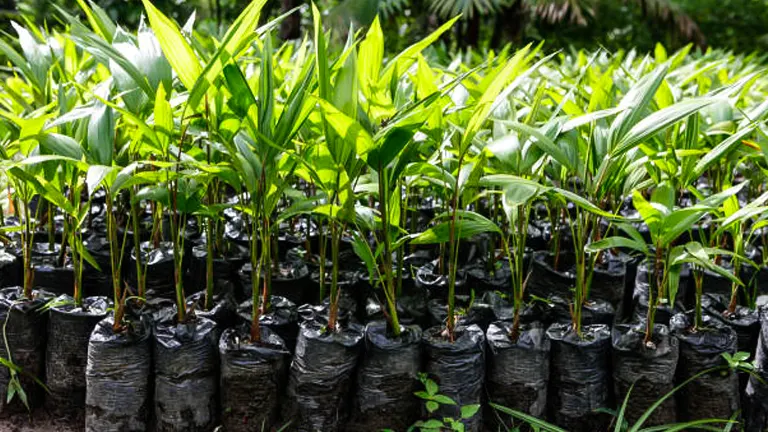
The strategic planning of palm tree placement is integral to developing a thriving palm grove or garden. The key to success lies not only in allowing for adequate growth space but also in understanding the unique growth patterns and space requirements of various palm species. This nuanced approach ensures optimal growth conditions, promoting health and vitality.
- Growth Patterns and Space Requirements: Palms can be broadly categorized into solitary and clustering types, each with distinct spacing needs. Solitary palms, like the majestic Royal Palm (Roystonea regia), grow a single trunk and command more space, while clustering palms, such as the Areca Palm (Dypsis lutescens), grow multiple stems from their base and can be planted closer together.
- Importance of Canopy and Root System Considerations: The mature canopy width provides a guideline for horizontal spacing, but understanding the palm’s root system—whether it’s deep-rooted or has a more superficial spread—is equally important for determining the depth of planting and spacing from structures.
- Environmental and Climatic Influences: Local environmental conditions, such as wind patterns and sunlight exposure, should also influence planting strategies. Palms that are susceptible to wind damage may require closer spacing or sheltered positioning, while those requiring full sun should not be overshadowed by nearby plants or structures.
To aid in the application of these principles, the following table offers a starting point for determining optimal spacing based on a combination of scientific considerations and practical experience:
| Palm Species | Growth Type | Mature Canopy Width | Recommended Plant-to-Plant Spacing | Recommended Row Spacing | Additional Considerations |
|---|---|---|---|---|---|
| Royal Palm (Roystonea regia) | Solitary | Up to 25 feet | 20-30 feet | 25-35 feet | Provide ample space for majestic presence; consider wind exposure. |
| Areca Palm (Dypsis lutescens) | Clustering | 8-10 feet | 6-8 feet | 10-12 feet | Suitable for privacy screens; tolerates closer spacing. |
| Pygmy Date Palm (Phoenix roebelenii) | Solitary | 6-10 feet | 6-10 feet | 10-15 feet | Ideal for underplanting and small gardens; adjust spacing based on design intent. |
| Mexican Fan Palm (Washingtonia robusta) | Solitary | Up to 15 feet | 10-15 feet | 15-20 feet | Account for vertical growth; avoid planting too close to structures. |
Tailoring Strategies to Specific Needs
Incorporating these advanced insights and applying the guidelines provided in the table can significantly enhance the planning and establishment of palm landscapes. Remember, these recommendations serve as a general framework; customization based on specific site conditions, palm species characteristics, and design objectives is essential for success.
Furthermore, integrating companion planting principles—selecting underplantings that complement the palms in terms of water, light, and nutrient requirements—can enrich the palm garden’s ecological balance and aesthetic appeal.
Best Practices for Fertilizing Palm Trees
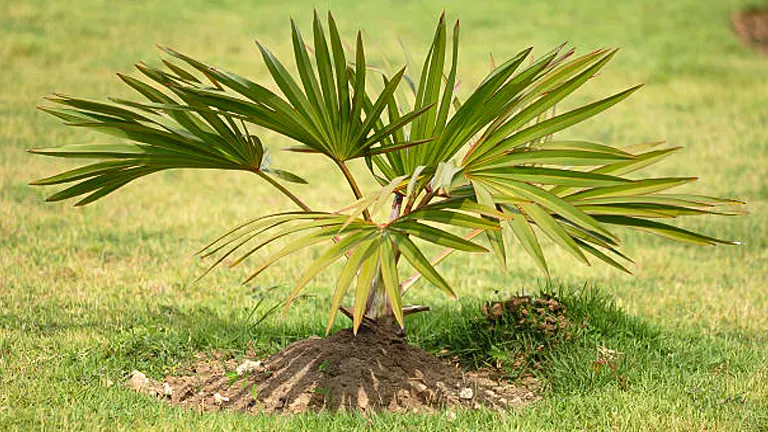
Fertilization plays a pivotal role in the growth and health of palm trees, requiring a nuanced understanding of nutrient needs, timing, and application methods. This section expands on these aspects, providing a comprehensive guide tailored to the unique lifecycle of palm trees.
Understanding Nutrient Needs and Timing
- Nutrient Release Rates: The choice of fertilizer, whether slow-release granules or liquid forms, significantly impacts nutrient availability to palm trees. Slow-release fertilizers ensure a gradual supply of nutrients over several months, aligning with the palm’s natural growth cycle and minimizing leaching.
- Seasonal Timing and Frequency: The growth cycle of palm trees influences the optimal timing for fertilization. During peak growth periods in spring and summer, palms can more efficiently utilize nutrients. In these seasons, applying fertilizer every 2-3 months supports sustained growth. In contrast, during cooler months, reduce fertilization frequency to prevent nutrient overload, which could harm the tree.
Unique Insights and Common Mistakes
- Micronutrient Foliar Sprays: For immediate treatment of micronutrient deficiencies, consider foliar sprays as a supplementary method to soil application. These can provide quick relief for symptoms like chlorosis.
- Avoiding Over-fertilization and Under-fertilization: Balance is key. Excessive fertilizer can damage roots and lead to nutrient runoff, while insufficient fertilization may not meet the palm’s growth demands. Regular monitoring and soil testing can guide adjustments in your fertilization regimen.
- Environmental Considerations: Choose environmentally friendly fertilizers where possible, and consider the local ecosystem, especially if you’re near water bodies, to minimize impact.
Step-by-Step Guide on How to Fertilize Palm Trees
Step 1: Conduct a Soil Test
- Objective: Determine the soil’s current nutrient levels and pH to tailor your fertilization plan.
- Process: Collect soil samples from around the palm’s root zone, at a depth of 4-6 inches. Use a soil testing kit or send samples to a local extension service for analysis.
Step 2: Select the Appropriate Fertilizer
- Criteria: Choose a fertilizer based on the soil test results, focusing on one with a suitable NPK ratio and essential micronutrients like magnesium, manganese, and iron.
- Types: Consider slow-release granular fertilizers for extended nutrient release or liquid fertilizers for quicker absorption, depending on the palm’s immediate needs.
Step 3: Calculate the Correct Amount of Fertilizer
- Guideline: The general recommendation is to use 1.5 pounds of fertilizer per 100 square feet of canopy area, but adjust based on the specific product instructions and the palm’s size.
- Precision: Use a weighing scale for accuracy, especially when dealing with large quantities.
Step 4: Time Your Fertilization
- Best Time: Fertilize during the palm’s active growth period, typically in the warmer months of spring and summer.
- Frequency: Apply every 2-3 months during the growth period, reducing frequency in cooler months.
Step 5: Prepare the Area
- Clearing: Remove debris and mulch from the base of the palm to expose the soil.
- Safety: Wear gloves and protective clothing, especially when handling chemical fertilizers.
Step 6: Apply the Fertilizer
- Method for Granular Fertilizer:
- Spread the fertilizer evenly in a circular pattern around the palm, starting about 2 feet from the trunk and extending to the drip line. This area is where the palm’s feeder roots are most active.
- Lightly rake the fertilizer into the top inch of soil to help it integrate and prevent runoff.
- Method for Liquid Fertilizer:
- Dilute the fertilizer according to the manufacturer’s instructions.
- Apply evenly around the palm’s root zone, using a watering can or hose attachment for even distribution.
Step 7: Water the Palm
- Purpose: Watering helps dissolve granular fertilizer and distribute nutrients evenly through the soil, making them accessible to the palm’s roots.
- Technique: Use a slow and deep watering method to encourage deeper root growth and ensure the fertilizer is well integrated into the soil.
Step 8: Monitor and Adjust
- Observation: After fertilization, monitor the palm for signs of improvement or any adverse reactions.
- Adjustment: If the palm shows signs of over-fertilization (burned tips or yellowing leaves), adjust the amount or frequency accordingly.
Step 9: Record Keeping
- Log: Keep a record of fertilization dates, amounts, and types of fertilizer used. This history can be invaluable for troubleshooting and refining your palm care routine over time.
Step 10: Follow-Up Soil Testing
- Periodic Testing: Conduct soil tests annually or bi-annually to gauge the ongoing effectiveness of your fertilization regimen and make adjustments as necessary.
Pruning Techniques for Healthy Palms
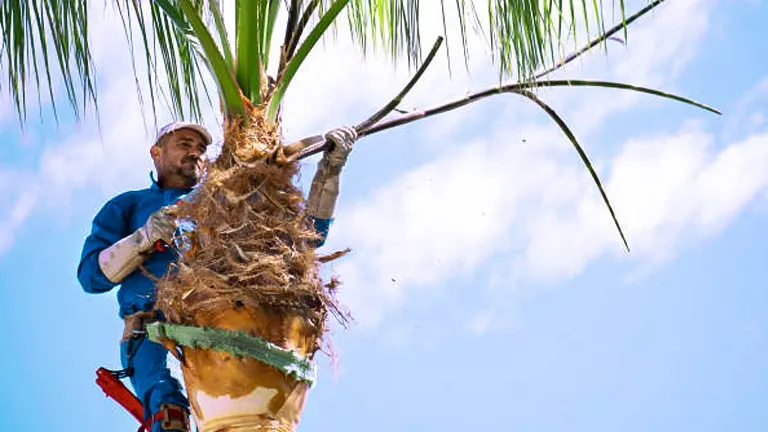
Pruning is an integral part of palm tree care, essential not just for the tree’s aesthetic but also for its health. Proper pruning practices include:
- Why Pruning Matters: Removing dead or dying fronds can help prevent pest infestations and diseases, and it also ensures that the palm’s energy is directed towards new growth and health maintenance.
- How to Prune Palm Trees: Use clean, sharp tools to make precise cuts without damaging the trunk. Only remove fronds that are completely dead or significantly damaged. Over-pruning or removing too many green fronds can stress the palm and slow its growth.
- Safety and Equipment: Always wear protective gear, and consider hiring professionals for tall palms to ensure safety.
Ongoing Care and Maintenance

The health and beauty of palm trees are not solely contingent on proper fertilization; comprehensive care involves consistent attention to watering, monitoring, and the potential need for professional intervention.
- Watering: Watering practices play a crucial role in the effectiveness of fertilization. Palms require consistent moisture, especially in the warmer months or in arid climates. However, overwatering can be just as detrimental as under-watering, leading to root rot or fungal diseases. The goal is to maintain moist, well-drained soil. Implementing a deep-watering method encourages roots to grow deeper, enhancing the palm’s drought tolerance and overall stability.
- Monitoring Tree Health: Regular observation of your palm trees can reveal early signs of nutrient deficiency, pest infestation, or disease, allowing for timely intervention. Key indicators include discoloration of leaves, unusual leaf shapes, or slowed growth. Adjusting your care regimen in response to these signs can prevent more severe issues from developing.
- Professional Care: While many aspects of palm care can be managed by the gardener, certain situations, such as diagnosing complex diseases, applying treatments for large trees, or undertaking extensive pruning, may require the expertise of a certified arborist. Professional arborists can provide valuable insights into the specific needs of your palm trees, ensuring that they continue to thrive.
Conclusion
Creating a tropical paradise with palm trees is a rewarding endeavor that requires careful planning, consistent care, and a deep understanding of the specific needs of these majestic plants. From selecting the right fertilizer and understanding optimal planting strategies to implementing best practices for fertilization and pruning, every step is crucial in nurturing healthy, vibrant palms. By avoiding common mistakes, such as over-fertilization or improper watering, and staying vigilant about the health of your trees, you can ensure that your palm trees remain a stunning feature of your landscape for years to come.
FAQs
- How does the local climate affect my palm tree fertilization schedule?
Local climate conditions play a significant role in determining the best fertilization schedule for your palm trees. In regions with a year-round warm climate, palm trees may require more frequent fertilization due to prolonged growth periods. Conversely, in cooler climates, growth slows, and so does the need for frequent fertilization. Always adjust fertilization timing to your palm’s active growth periods, which are climate-dependent. - Can mulch affect how I fertilize my palm trees?
Yes, mulching around palm trees can influence your fertilization approach. While mulch helps retain soil moisture and regulate temperature, it can also intercept fertilizer before it reaches the soil if not applied properly. Ensure to pull back mulch when applying fertilizer to guarantee direct soil contact, then replace the mulch to continue benefiting from its protective properties. - Why is the specificity of the NPK ratio important for palm trees?
Palm trees require a specific NPK (nitrogen-phosphorus-potassium) ratio to address their unique nutritional needs at different growth stages. An improper ratio can lead to nutrient imbalances, affecting growth and health. For instance, too much nitrogen can promote leaf growth at the expense of root development, while insufficient potassium might weaken the palm against diseases and environmental stress. - How do I adjust fertilization for potted palm trees versus those planted in the ground?
Potted palm trees often require more frequent fertilization than their ground-planted counterparts due to limited soil resources and quicker drying of the potting mix. Use a balanced, slow-release fertilizer but at half the strength recommended for ground-planted palms to avoid over-concentration of nutrients, which can be detrimental in the confined soil volume of a pot. - What role does soil pH play in fertilizing palm trees?
Soil pH can significantly impact nutrient availability to palm trees. Most palms prefer slightly acidic to neutral soil (pH 6.0-7.0). If the soil is too acidic or alkaline, it may lock up certain nutrients, making them unavailable to the tree, regardless of fertilization. Testing soil pH and adjusting it through amendments can ensure that your palms can access the nutrients they need. - How does over-fertilization affect local wildlife and ecosystems?
Over-fertilization can lead to nutrient runoff, which may contaminate local waterways, promoting algal blooms that deplete oxygen in the water and harm aquatic life. Using fertilizers judiciously and choosing environmentally friendly options can minimize these impacts, protecting local ecosystems and wildlife. - Can the architecture of palm roots affect fertilization strategies?
Absolutely. Palm roots are fibrous and spread out laterally rather than deeply. This root structure means that nutrients need to be applied closer to the soil surface and around the palm’s base, extending outward, to ensure they are within reach of the roots. Understanding this can influence both the placement and the amount of fertilizer used. - How does the lifecycle stage of the palm tree influence its fertilization needs?
Palms at different stages of their lifecycle have varying nutritional requirements. Seedlings and young palms are in a rapid growth phase and may benefit from higher nitrogen levels to support foliage development. Mature palms, however, might require a more balanced approach, with an emphasis on potassium to enhance disease resistance and overall health. Adjusting fertilization based on the palm’s lifecycle stage can promote optimal growth and longevity.
Embracing these fertilization secrets unlocks the door to a lush, tropical paradise in your own backyard. With the right knowledge and a touch of care, your palm trees will not only survive but thrive, standing tall as vibrant testaments to your gardening prowess. Happy gardening, and may your palms flourish, bringing a slice of paradise to life.
For more expert gardening advice, explore our guides, discover top recommendations in our best section, and delve into in-depth product reviews in our review section.

Benjamin Brooks
Forestry AuthorGreetings! I'm Benjamin Brooks, and my journey over the past 15 years has revolved around the fascinating realms of content creation, expertise in snow clearing, and the intricate world of lumberjacking and landscaping. What began as a simple curiosity about the natural world and heavy machinery has evolved into a passionate profession where my love for crafting words intertwines seamlessly with my lumberjacking and garden skills.













Leave your comment